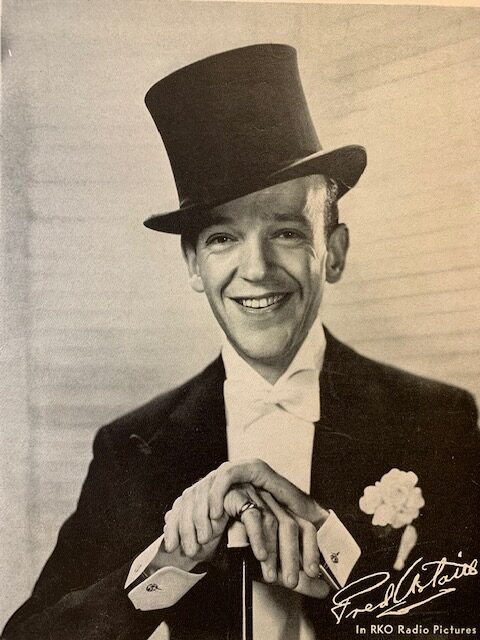
The dandy reveals himself by what he wears. His essence is external display. Photographs, therefore, inherently constitute a better medium to communicate the significance of the dandy than do words. Words, however artfully crafted, can only mediate, not exhibit, the effect of the dandy. Photographs, on the other hand, permit us to directly experience the dandy. This jewel box of a book is the very model of what a volume about the dandy should be.
For several decades G. Bruce Boyer has been the preeminent writer about men’s clothing, and in 2005 gave us “Fred Astaire Style.” His erudition and taste show. His pithy and perceptive introductory essay deftly assesses Astaire’s sartorial significance in the annals of dandyism. Astaire is the American Dandy, a “classless aristocrat,” the populist exponent of natural elegance. The author then sagaciously steps aside and gives Mr. Astaire center stage: 60 pages of photographs, wisely chosen and many never-before-published, primarily showing Astaire in elegant mufti rather than in his movie costumes. Mr. Boyer unobtrusively annotates the photographs at the end of the book.
Linger over, do not flip through, the photographs. Each one rewards patient study, for each one is a study in elegance and a lesson in taste. Several photos appear as a “flip-book” on Assouline’s site.
Having read the essay and studied the photographs, what is my ultimate judgment on Astaire? All in all, he is second best. This conclusion about one of the all-time consummate dressers may sound condescending, but it is fair. He is second to the Duke of Windsor as an influence on men’s fashion and in promoting “nonchalant elegance,” to use Mr. Boyer’s felicitous phrase. In style, the Duke has a trifle the preference. Compare photographs of Astaire and the Duke: Astaire’s casualness seems, to my eye, a trifle studied or contrived at times. The Duke, on the other hand, while not as overtly casual, seems more natural whatever his attire, from morning clothes to sockless and short-sleeved. Also, Astaire’s peculiar emaciated frame means that his clothing style is, quite admirably, uniquely suited to him and proves his sartorial acuity. It also means that his style does not easily translate to others and therefore lessens his influence. Astaire also ranks second as the screen’s greatest style icon: second to, of course, the incomparable Cary Grant, a man who transcends clothes, dressing well and even, it must be admitted, dandyism. Astaire was, on the whole, better dressed than Grant, but Grant has that nescio quid. Perhaps it is only that Grant is more conventionally handsome, but everybody wants to be Cary Grant.
Ah, but I quibble: I would gladly settle for being Fred Astaire. — NICK WILLARD
